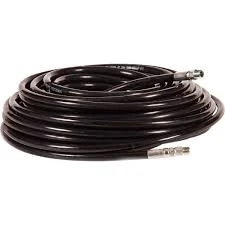how to change high pressure power steering hose
How to Change a High-Pressure Power Steering Hose
Changing a high-pressure power steering hose is a task that many car owners can tackle with some basic tools and a little bit of patience. The power steering system relies on hydraulic pressure to allow for smooth steering, and a malfunctioning hose can lead to leaks, making steering difficult and compromising vehicle safety. Follow these steps to change your high-pressure power steering hose effectively.
Tools and Materials Needed
1. New high-pressure power steering hose 2. Wrench set 3. Screwdrivers (flathead and Phillips) 4. Pliers 5. Drain pan 6. Power steering fluid 7. Safety glasses 8. Gloves
Step 1 Safety First
Before you begin, ensure that your vehicle is parked on a flat surface and the ignition is off. Engage the parking brake and disconnect the battery to prevent any electrical issues. It’s essential to wear safety glasses and gloves to protect yourself from power steering fluid, which can irritate the skin.
Step 2 Locate the High-Pressure Hose
The high-pressure power steering hose is usually connected to the power steering pump and the steering gear or rack
. You can refer to your vehicle’s manual for specific details about its location.Step 3 Drain the Fluid
Place a drain pan under the power steering pump to catch any fluid that might spill out. Loosen the hose connections at both the pump and the steering gear using a wrench, making sure to keep a firm grip on the hose to avoid damaging other components. Allow the fluid to drain completely.
how to change high pressure power steering hose

Step 4 Remove the Old Hose
Once all the fluid has drained, carefully remove the old high-pressure hose from the connections. If there are any clamps or brackets holding the hose in place, make sure to remove them as well. Take care not to damage surrounding parts.
Step 5 Install the New Hose
Take your new high-pressure power steering hose and align it with the connections. Make sure it is oriented correctly and tighten the connections securely with a wrench. Be cautious not to overtighten, as this can lead to damage.
Step 6 Refill the Power Steering Fluid
With the new hose in place, refill the power steering fluid through the reservoir. Consult your owner’s manual for the correct type of fluid your vehicle requires. After refilling, turn the steering wheel from lock to lock a few times while the engine is off, to help circulate the fluid and remove any air bubbles.
Step 7 Check for Leaks
Reconnect the battery, start your vehicle, and check the area around the new hose for leaks. If everything looks good, turn the steering wheel again to ensure the system is functioning smoothly.
Conclusion
Changing a high-pressure power steering hose can seem daunting at first, but with the right tools and careful attention to detail, it becomes a manageable DIY project. Regular maintenance of your power steering system will help ensure safe and easy steering for years to come. If you encounter any issues or are unsure about the process, don’t hesitate to consult a professional mechanic.
-
Ultimate Spiral Protection for Hoses & CablesNewsJun.26,2025
-
The Ultimate Quick-Connect Solutions for Every NeedNewsJun.26,2025
-
SAE J1401 Brake Hose: Reliable Choice for Safe BrakingNewsJun.26,2025
-
Reliable J2064 A/C Hoses for Real-World Cooling NeedsNewsJun.26,2025
-
Heavy-Duty Sewer Jetting Hoses Built to LastNewsJun.26,2025
-
Fix Power Steering Tube Leaks Fast – Durable & Affordable SolutionNewsJun.26,2025

